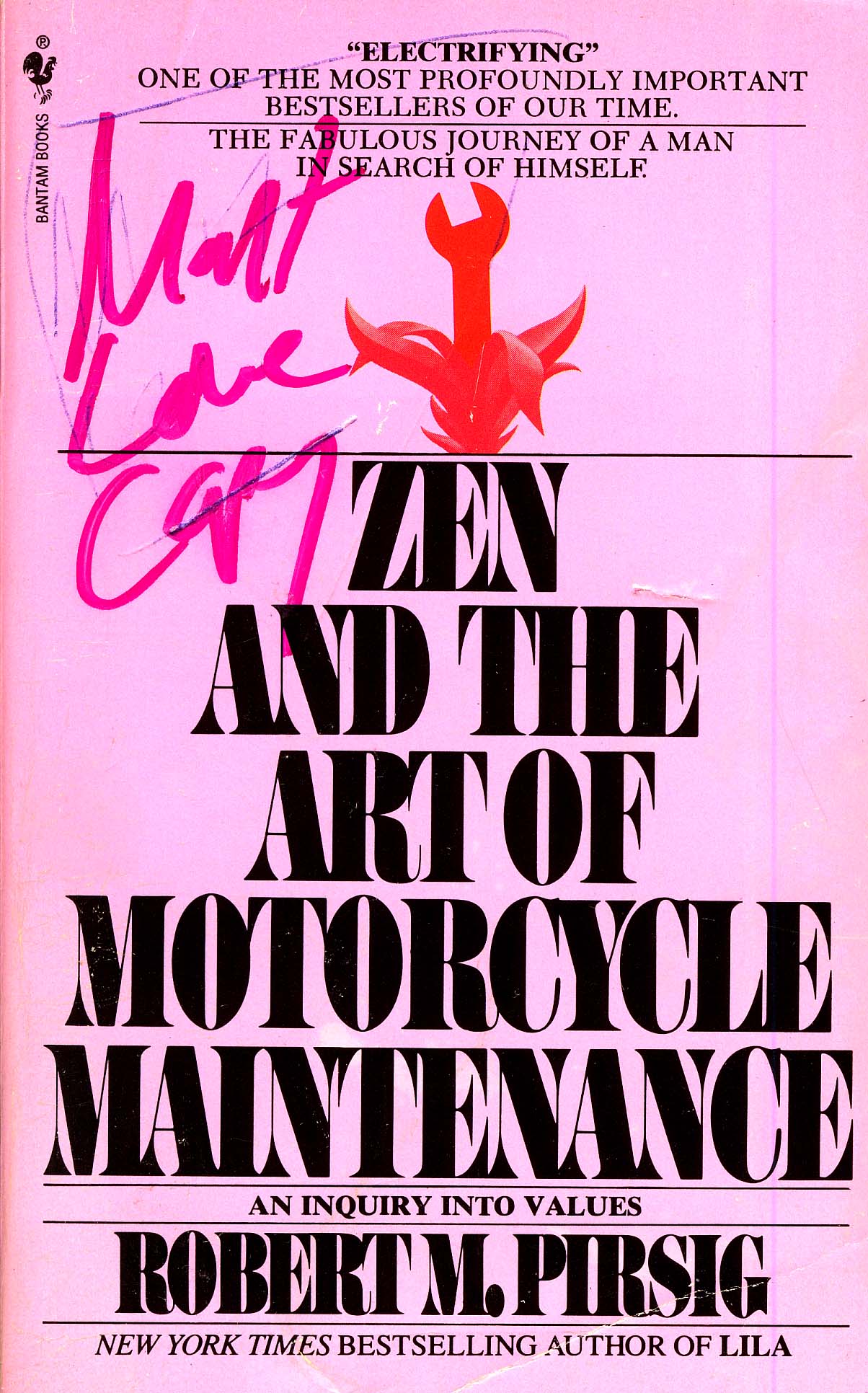On Zen and the Art of Motorcycle Maintenance
For decades I’d seen copies of Zen and the Art of Motorcycle Maintenance by Robert Pirsig in bookstores, libraries, garage sales, thrift stores, everywhere.
But I never bothered reading it until a year ago when I found a worn edition entombed in a box of discarded books ready for the recycling center. You never know what rescuing something from oblivion can do to you: dogs, cats, books, records, ideas, abandoned dairy farms, people…yourself. That’s pretty much what I’m doing these days, rescuing myself from oblivion.
But people are coming to my aid to assist in ways I never dreamed possible. Thank you.
After finishing Zen, it instantly occurred to me that had I read this book in my mid 30s, it probably would have changed my entire teaching and (later) writing styles. I also would have derived tremendous inspiration from learning the fact that the book, published in 1974 and still in print, was rejected 121 times and went on to sell 5 million copies—a world record for a book with the highest number of rejections.
Many people reading this have read this counterculture classic. If you haven’t, you should, but not for a nostalgic return to 1974 when coffee was coffee and travelers needed paper maps and pay phones. Rather, read Zen to reappraise contemporary culture with a similar lens that Pirsig employed. You might find how shockingly modern this book sounds.
I don’t want to give too much away about Zen here, but the core of the story is Pirsig’s discursive and digressive motorcycle journey (with his troubled son) through the high country of the Western United States, including Eastern and Central Oregon, until he finally reaches the ocean in Northern California.
There, Pirsig remarks: “We round a sharp turn up an overhanging cliff. The ocean stretches forever, cold and blue out there, and produces a strange sense of despair. Coastal people never really know what the ocean symbolizes to landlocked inland people—what a great distant dream it is, present but unseen in the deepest levels of subconsciousness, and when they arrive at the ocean and the conscious images are compared with the subconscious dream there is a sense of defeat at having come so far to be so stopped by a mystery that can never be fathomed. The source of it all.”
 Reading that passage almost made me stand up. I had never thought of the ocean that way because I see it every day of my life. There is no despair and defeat in me whatsoever when I visit the beach. On the contrary, I feel elation, victory and the eternal possibility of rebirth near the ocean, the source of it all.
Reading that passage almost made me stand up. I had never thought of the ocean that way because I see it every day of my life. There is no despair and defeat in me whatsoever when I visit the beach. On the contrary, I feel elation, victory and the eternal possibility of rebirth near the ocean, the source of it all.
In the last year, that feeling of a mere possibility of rebirth kept me alive, kept me writing, kept me from giving up my spirit.
I was so moved reading Zen that I developed a writing/creative thinking workshop from the experience that produced wonderful results with writers of all ages.
The workshop was based on a series of writing prompts I generated from my reading of the novel. They are below. Just meander through them as a writer, observe, recount, reflect, inquire. Stay off the metaphorical main highways of life and don’t eat in metaphorical chain restaurants. Something good will come of this journey.
Zen and the Art of Motorcycle Maintenance Prompts
- What is quality in your life and thought?
- What do you know how to fix?
- What do you doubt most in life?
- What do you have the most enthusiasm (gumption) for in life?
- What’s your favorite cure for boredom?
- Make a to-do list to improve your life:
- Why do people do things half ass in life? Do you? Why?
- What’s an assumption in American life that must be challenged? Why?
- Respond to this statement: “Grades really cover up failure to teach.”
- Is technology a “death force” in American cultural life? Explain why or why not.
- Where would you rather be? Riding the high country or walking near the ocean. Explain.
- Respond to this statement: “Cell phones have introduced ugliness and clumsiness into my actions and thoughts.”
- Write about one side of an American coin for 30 minutes.
Number 13 is the real electric prompt for me. Try it. Try where it takes you deep into your phony (Holden’s word) preconceived notions of all things American greatness and equality. At the very minimum, you will write, our coinage is boring. It doesn’t inspire anything except to give away these coins to people who need them to survive. I’m meeting these people all the time in my new life.
(If you found this post enjoyable, thought provoking or enlightening, please consider supporting a writer at work by making a financial contribution to this blog or by purchasing an NSP book.)

